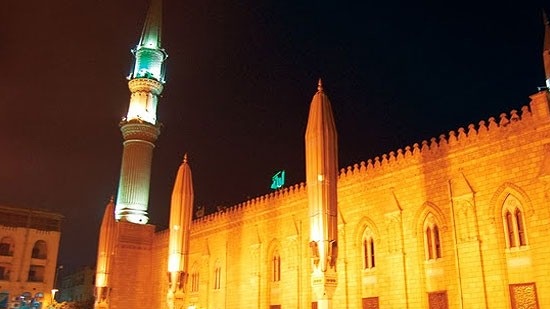"A place acquires its value from the people that live in it," goes the Egyptian proverb, and Cairo is a vivid example.
Here the contrast between the legacy of the past and the living present is quite intense, and to be able to get a real taste of the city whose Arabic name means "the Conqueror" you have to look for the fine line that stitches together the madness and the grandiose, and then you walk that line.
Islamic Cairo is overwhelming, but the best way to try and grasp it all is to start from the beginning, in Al-Muezz Street where the first stones were laid to create the city which is named in Arabic for the conquering red planet, Mars.
We start at Al-Hussein Mosque, named for the grandson of the Prophet Muhammad. According to local legend, his head is buried in the shrine inside the mosque.
If you are lucky enough to attend the moulid (festival) of Hussien, which falls during the month of Rabia Al-Thani in the Islamic calendar, you are in for an enchanting Sufi experience. However, to avoid the crowds that are not necessarily part of the treat, it is probably better to attend the March of Sufi sects that is usually after afternoon prayers on the big night of the moulid.
Keep the mosque on your right as you enter a scene from Arabian Nights. Khan Al-Khalili is perhaps the oldest handicraft market in Cairo. Built and named after Djaharks Al-Khalili on the ruins of the Fatimid saga, according to Hamdi Abu Goliel's latest book Al-Qahera: Shawarea wa Hekayat (Cairo: Streets and Stories), its winding alleys and small shops bear a striking resemblance to the souks of the Arabian Nights, leading some to believe that Khan Al-Khalil was the inspiration for the setting of Arabian Nights.
The khan's location was once the heart of Fatimid reign. It is where the great Eastside palace, with its nine golden doors encrusted with precious stones, was erected by the fourth Fatimid caliph, Al-Muezz Ledin Allah Al-Fatemy.Here you can buy any handmade ornament you think of; you can even watch the artists crafting in action. But don't forget to haggle -- bargaining is an essential part of shopping in this part of town.
Keep walking, and on your right you will find a café named after literary legend Naguib Mahfouz. Mahfouz, who won the Nobel Prize for Literature in 1988, set his most famous works in this area of Cairo.
Continue in a straight line until the shady arches over your head give way to the sun, and on your right you will find the medieval complex of Sultan Qalawun, where the sultan is buried. Considered by some to be the one of the most beautiful tombs in the world, after the Taj Mahal, though much older, the place is serene as well as beautiful. The long corridor unfolds into perhaps the world's first general hospital, known as the Bimarestan ("the patient place") which once opened its doors to people of all social levels free of charge.
The hospital would secure two-month payments for all its cured patients so they could recuperate properly, and there was once a patio with a fountain and live soft music played as part of their music therapy sessions.
Along the way you will find the sabil (water dispensary) of Muhammad Ali, Egypt's famous nineteenth century ruler, who built the sabil in a prime location in the then-heart of Cairo in memory of his son Ismail who died in Sudan in 1822.
Aside from its architectural brilliance, the sabil's design is quite remarkable. To provide ordinary people with fresh drinking water, the sabil draws on underground reservoirs of water which flow on a slope of white marble to cool the water down.




